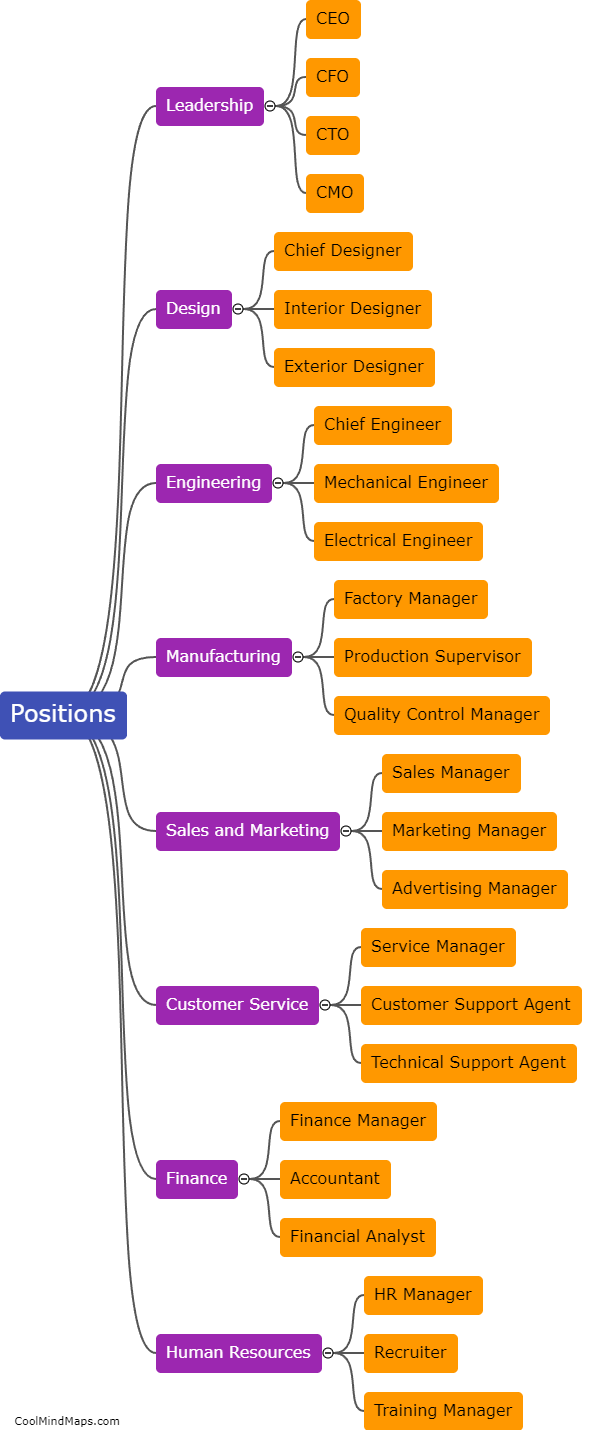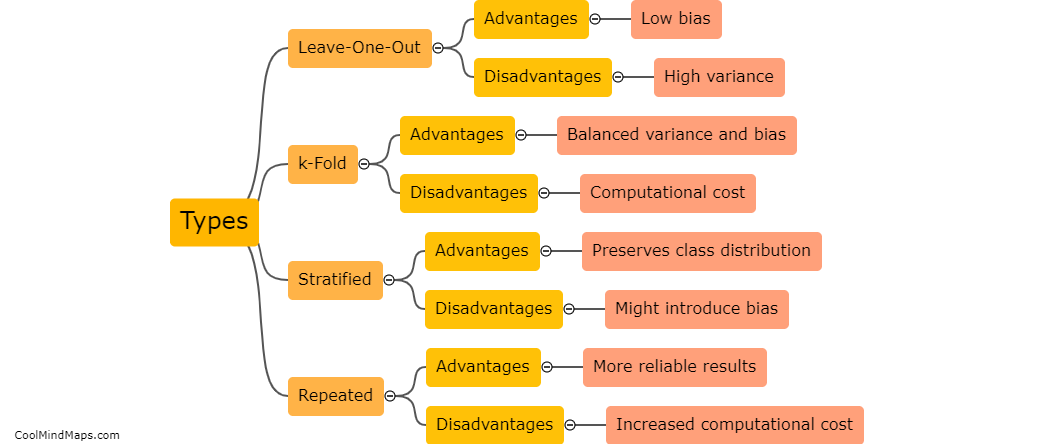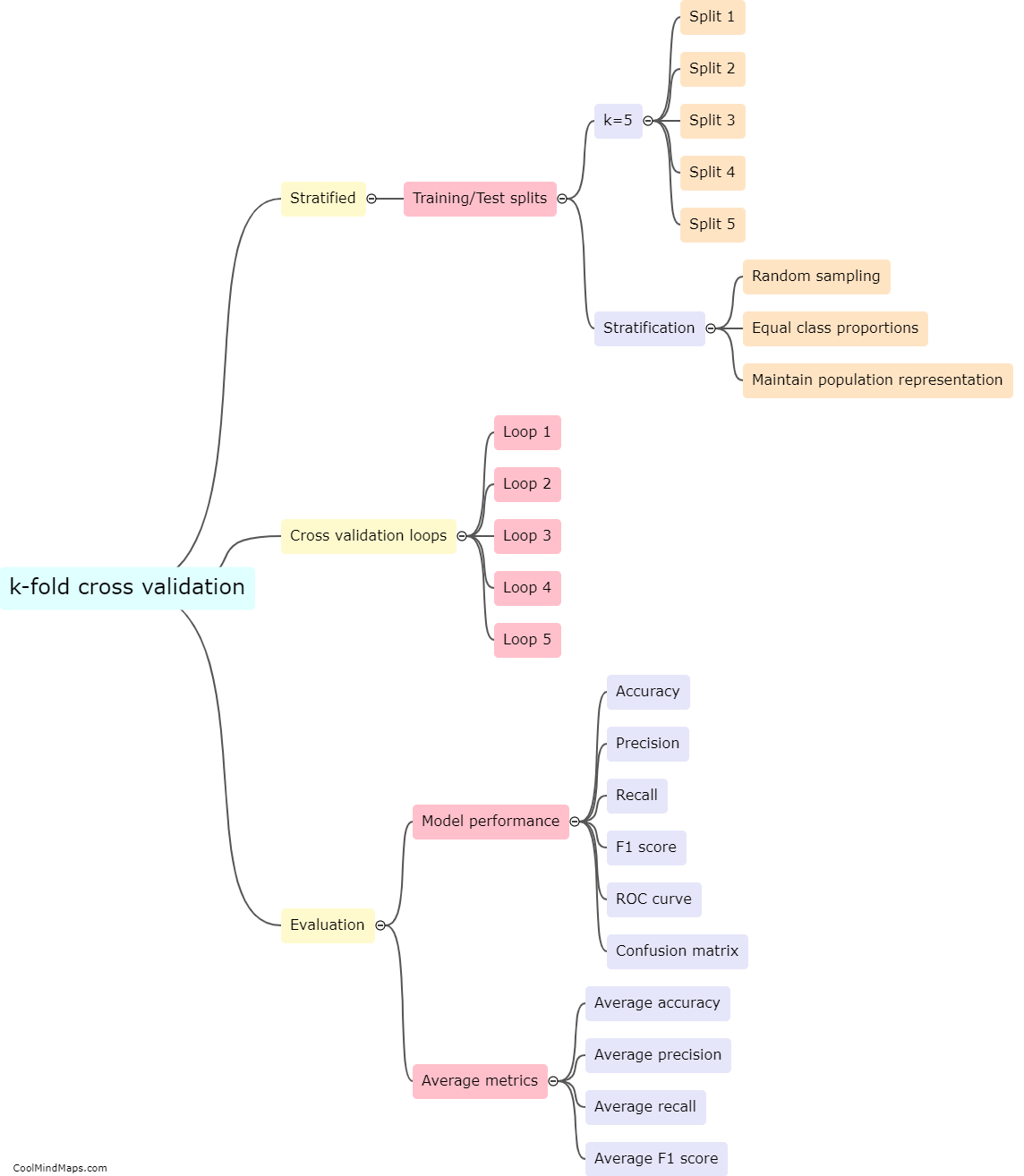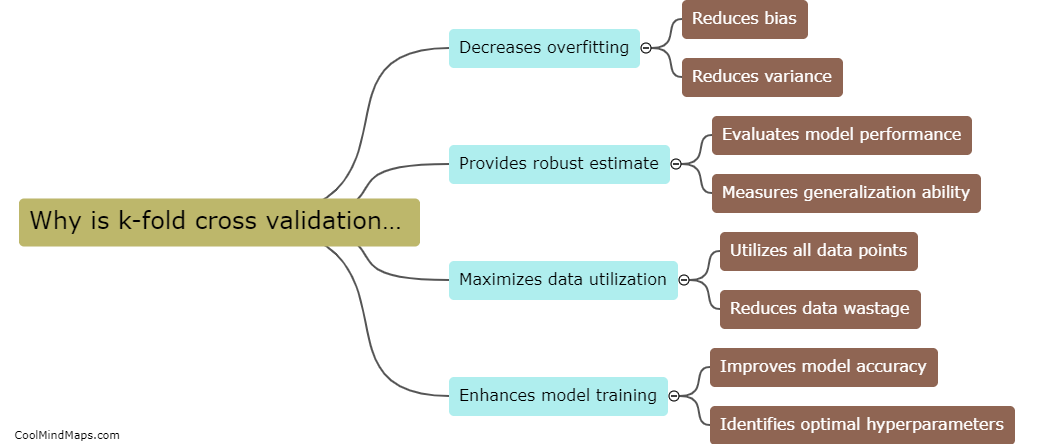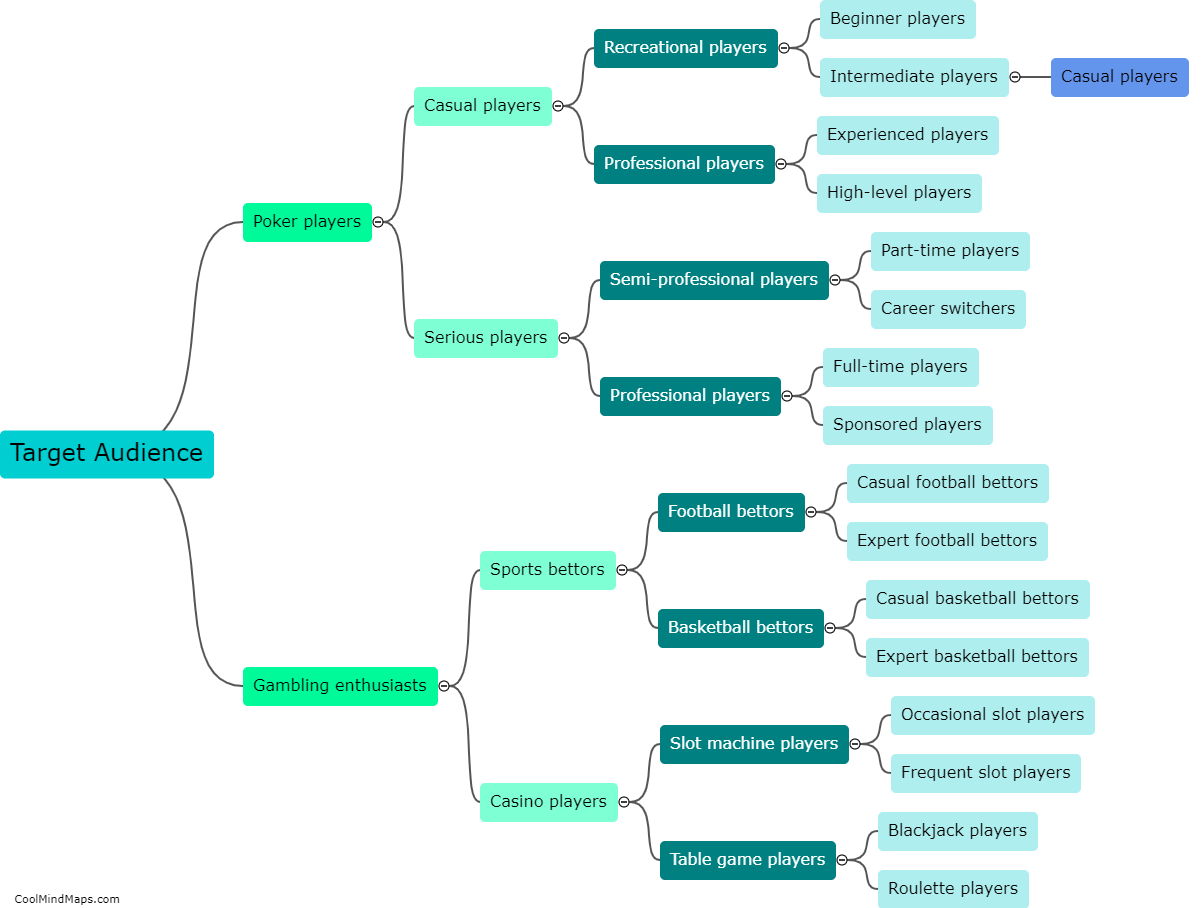What is k-fold cross validation?
K-fold cross-validation is a technique used in machine learning to estimate the performance of a model. It involves splitting the dataset into k subsets or folds of approximately equal size. The model is then trained and evaluated k times, with each fold serving as the testing set once and the remaining folds as the training set. The performance metrics obtained from each fold are then averaged to give an overall performance measure of the model. K-fold cross-validation helps to assess how well a model generalizes to unseen data and reduces the bias and variance in the performance estimation by using multiple subsets of data for testing and training.

This mind map was published on 23 January 2024 and has been viewed 91 times.
